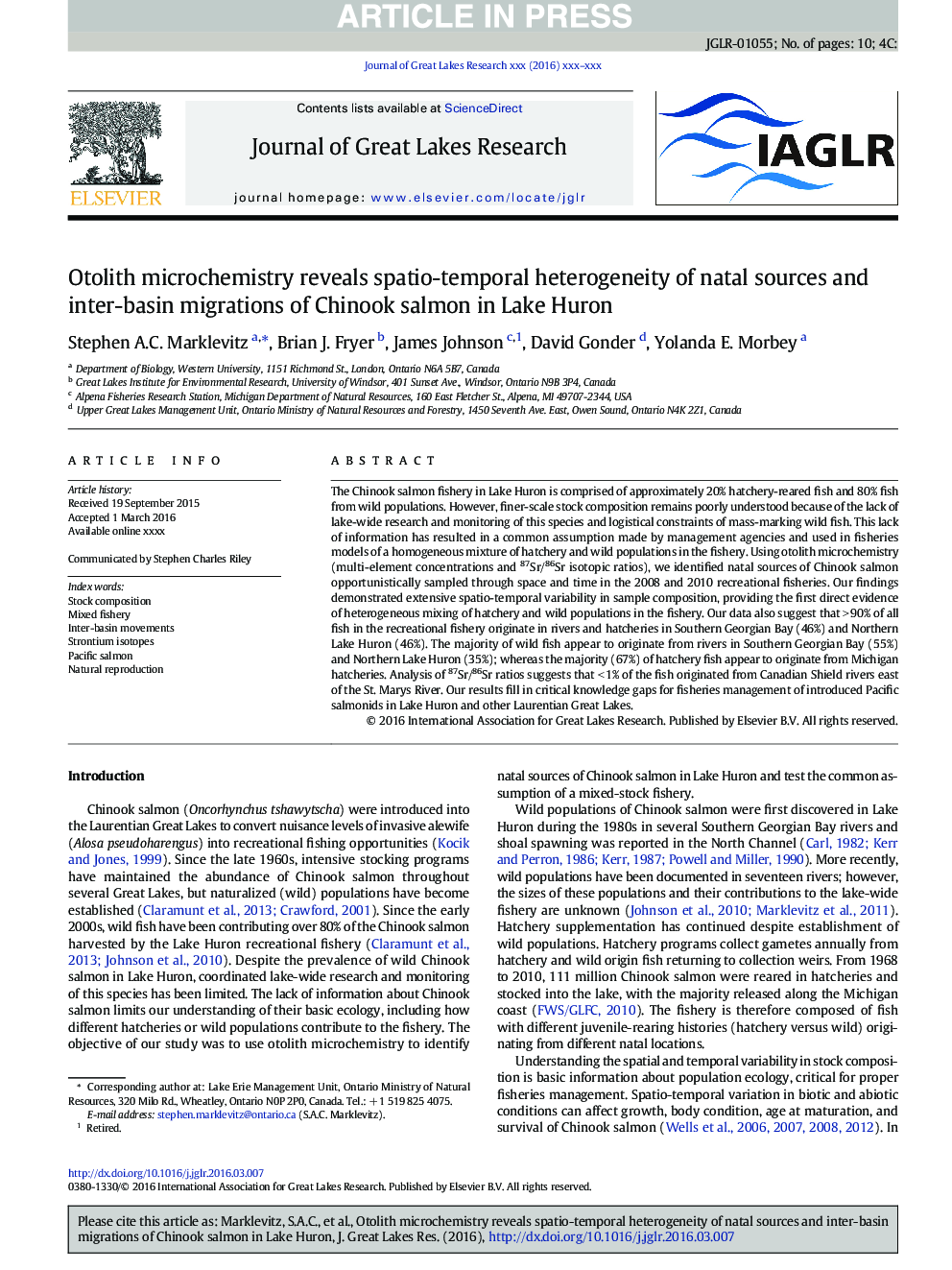| Article ID | Journal | Published Year | Pages | File Type |
|---|---|---|---|---|
| 6304683 | Journal of Great Lakes Research | 2016 | 10 Pages |
Abstract
The Chinook salmon fishery in Lake Huron is comprised of approximately 20% hatchery-reared fish and 80% fish from wild populations. However, finer-scale stock composition remains poorly understood because of the lack of lake-wide research and monitoring of this species and logistical constraints of mass-marking wild fish. This lack of information has resulted in a common assumption made by management agencies and used in fisheries models of a homogeneous mixture of hatchery and wild populations in the fishery. Using otolith microchemistry (multi-element concentrations and 87Sr/86Sr isotopic ratios), we identified natal sources of Chinook salmon opportunistically sampled through space and time in the 2008 and 2010 recreational fisheries. Our findings demonstrated extensive spatio-temporal variability in sample composition, providing the first direct evidence of heterogeneous mixing of hatchery and wild populations in the fishery. Our data also suggest that >Â 90% of all fish in the recreational fishery originate in rivers and hatcheries in Southern Georgian Bay (46%) and Northern Lake Huron (46%). The majority of wild fish appear to originate from rivers in Southern Georgian Bay (55%) and Northern Lake Huron (35%); whereas the majority (67%) of hatchery fish appear to originate from Michigan hatcheries. Analysis of 87Sr/86Sr ratios suggests that <Â 1% of the fish originated from Canadian Shield rivers east of the St. Marys River. Our results fill in critical knowledge gaps for fisheries management of introduced Pacific salmonids in Lake Huron and other Laurentian Great Lakes.
Related Topics
Physical Sciences and Engineering
Earth and Planetary Sciences
Earth and Planetary Sciences (General)
Authors
Stephen A.C. Marklevitz, Brian J. Fryer, James Johnson, David Gonder, Yolanda E. Morbey,
